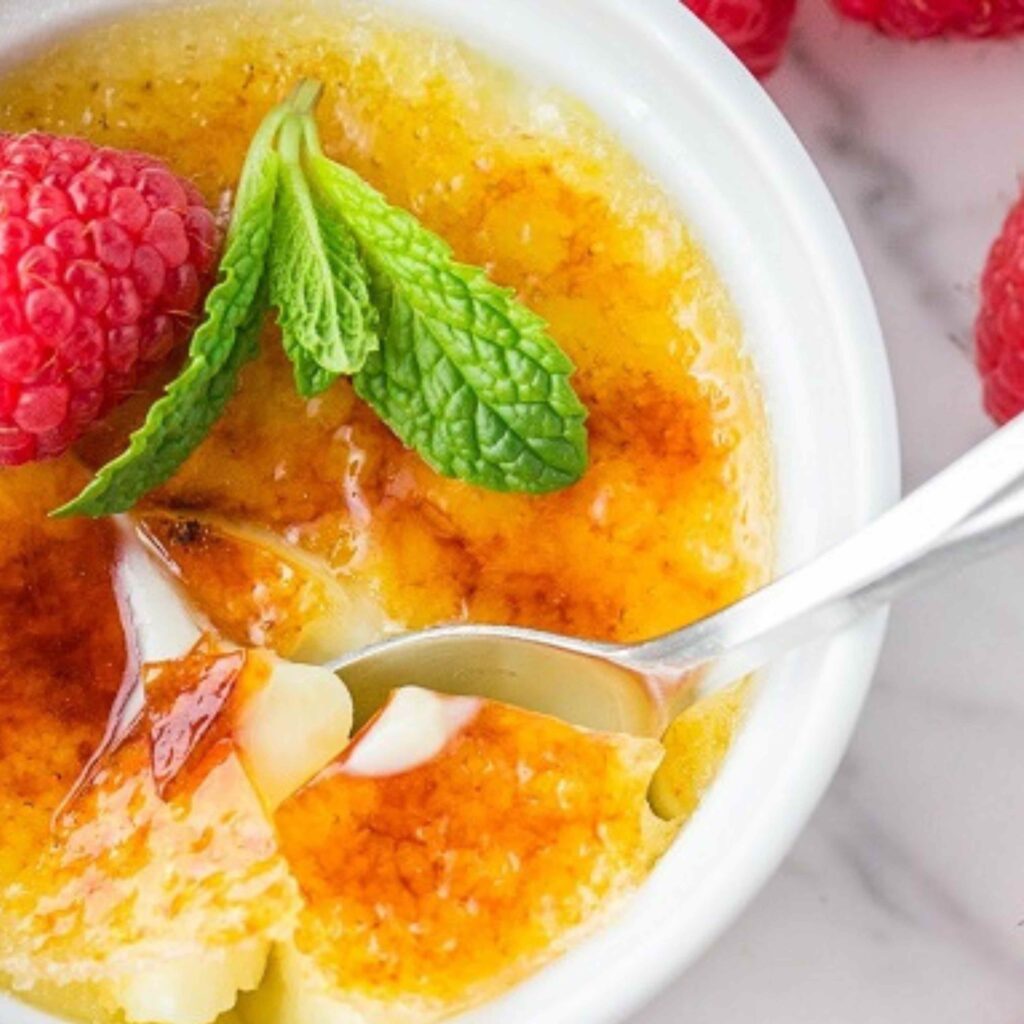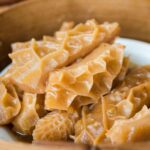
Créme Brûlée


The Origins of Crème Brûlée
Introduction
Crème Brûlée, a decadent and indulgent dessert that has delighted palates for centuries, boasts a captivating history that mirrors the elegance of French cuisine. In this article, we embark on a journey to unveil the intriguing origins and historical significance of Crème Brûlée, a beloved culinary creation that epitomizes the artistry of French desserts.
The Birth of Crème Brûlée
A French Delicacy
Our journey through the history of Crème Brûlée takes us to the heart of France, where this exquisite dessert found its beginnings. The name itself, “Crème Brûlée,” translates to “burnt cream,” hinting at the culinary alchemy that defines this sweet masterpiece.
An Ancient Legacy
Crème Brûlée’s roots can be traced back to medieval France, where it emerged as a favored dessert among the French aristocracy. The dish’s popularity extended to the Renaissance era when it was enjoyed in the courts of French kings and queens.
The Culinary Evolution
Elegance and Sophistication
Crème Brûlée is celebrated for its refined simplicity. It consists of a lusciously smooth custard base, typically flavored with vanilla, and crowned with a delicate layer of caramelized sugar. The contrast between the creamy interior and the crisp, caramelized topping embodies the essence of French culinary finesse.
A Global Sensation
Over time, Crème Brûlée transcended its origins and became a global sensation. Its luxurious texture and the delightful crack of the caramelized sugar have charmed dessert lovers worldwide, making it a sought-after finale to a fine dining experience.
Cultural Significance
French Culinary Heritage
Crème Brûlée stands as a symbol of French culinary heritage, exemplifying the art of transforming simple ingredients into a sophisticated delight. It embodies the French dedication to culinary excellence and presentation.
A Culinary Canvas
The dessert’s classic presentation in individual ramekins, with its signature sugar topping, allows for creative expression. Chefs and home cooks alike have experimented with variations, infusing flavors such as lavender, coffee, or citrus into the custard to create unique interpretations.
Conclusion
In conclusion, Crème Brûlée’s history is a testament to the enduring allure of elegance and simplicity in culinary arts. From its noble beginnings in medieval France to its status as an international dessert icon, Crème Brûlée continues to captivate with its velvety custard and caramelized sugar crust. Its journey from royal courts to modern dining tables is a tribute to the enduring appeal of this timeless French dessert.
For more information on Crème Brûlée’s preparation, ingredients, and serving suggestions, please refer to dedicated culinary resources and cookbooks.
- Serves: 4 People
- Prep Time: 20 minutes
- Cooking: 35 minutes
- Difficulties: medium
Ingredients
For Cooking
- 2 cups heavy cream
- 1vanilla bean or 1 teaspoon vanilla extract
- 5large egg yolks
- x1/2 cup granulated sugar
- Pinch of salt
- 4 tablespoons granulated sugar (for caramelizing)
For Dressing
Nutritional Information
-
Calories:
400 -
Total Fat
31g -
xSaturated Fat
18g -
Sodium:
35mg -
Total Carbohydrates:
28g -
Dietary Fiber
0g -
Sugars:
26g -
Protein:
4g
Procedure
Conclusion: Crème Brûlée offers the perfect blend of silky smoothness and a delicate crunch. Whether you opt for the classic recipe or try your hand at a chocolate variation, this dessert promises an exquisite culinary experience. Delight in the decadence of a velvety custard hidden beneath a crisp caramelized crust, a true masterpiece that embodies the artistry of French pastry.
-
Mark As Complete
Preheat your oven to 325°F (165°C).
-
Mark As Complete
In a saucepan, heat the heavy cream over medium heat until it’s just about to simmer. If using a vanilla bean, split it open, scrape the seeds, and add both the seeds and the pod to the cream. If using vanilla extract, skip this step.
-
Mark As Complete
In a mixing bowl, whisk together the egg yolks, granulated sugar, and salt until the mixture is pale and slightly thickened.
-
Mark As Complete
Slowly pour the heated cream into the egg mixture, whisking constantly to prevent curdling.
-
Mark As Complete
If using a vanilla bean, remove it from the mixture. If using vanilla extract, add it now.
-
Mark As Complete
Divide the custard mixture evenly among ramekins or oven-safe dishes.
-
Mark As Complete
Place the ramekins in a baking dish and fill the dish with hot water until it reaches halfway up the sides of the ramekins.
-
Mark As Complete
Carefully transfer the baking dish to the preheated oven and bake for 30-35 minutes, or until the custard is set but still slightly jiggly in the center.
-
Mark As Complete
Remove the ramekins from the water bath and let them cool to room temperature. Then refrigerate for at least 2 hours or until fully chilled.
-
Mark As Complete
Just before serving, sprinkle about 1 tablespoon of granulated sugar evenly over each custard. Use a kitchen torch to caramelize the sugar until it forms a golden-brown, crispy top.
-
Mark As Complete
Allow the sugar to harden before serving.
Dawood Ali Mian
Chef Dawood brings a wealth of experience and a diverse culinary background to our kitchen. His culinary training spans the globe, from classic French techniques to contemporary fusion cuisine. Drawing inspiration from both traditional and modern culinary traditions, Chef Dawood’s creations are a harmonious blend of flavors and textures that tantalize the palate.
You also might like
No recipe were found.



